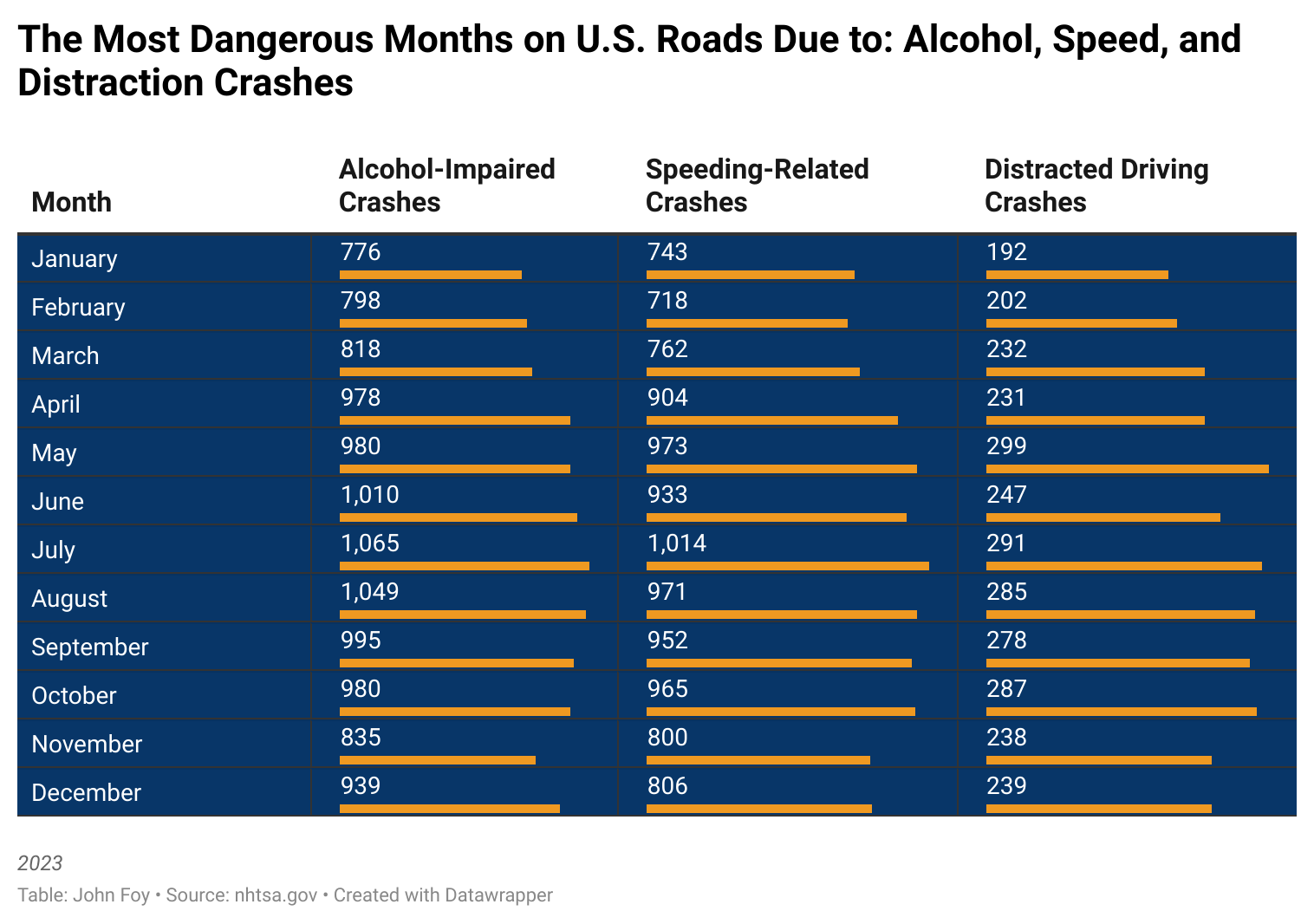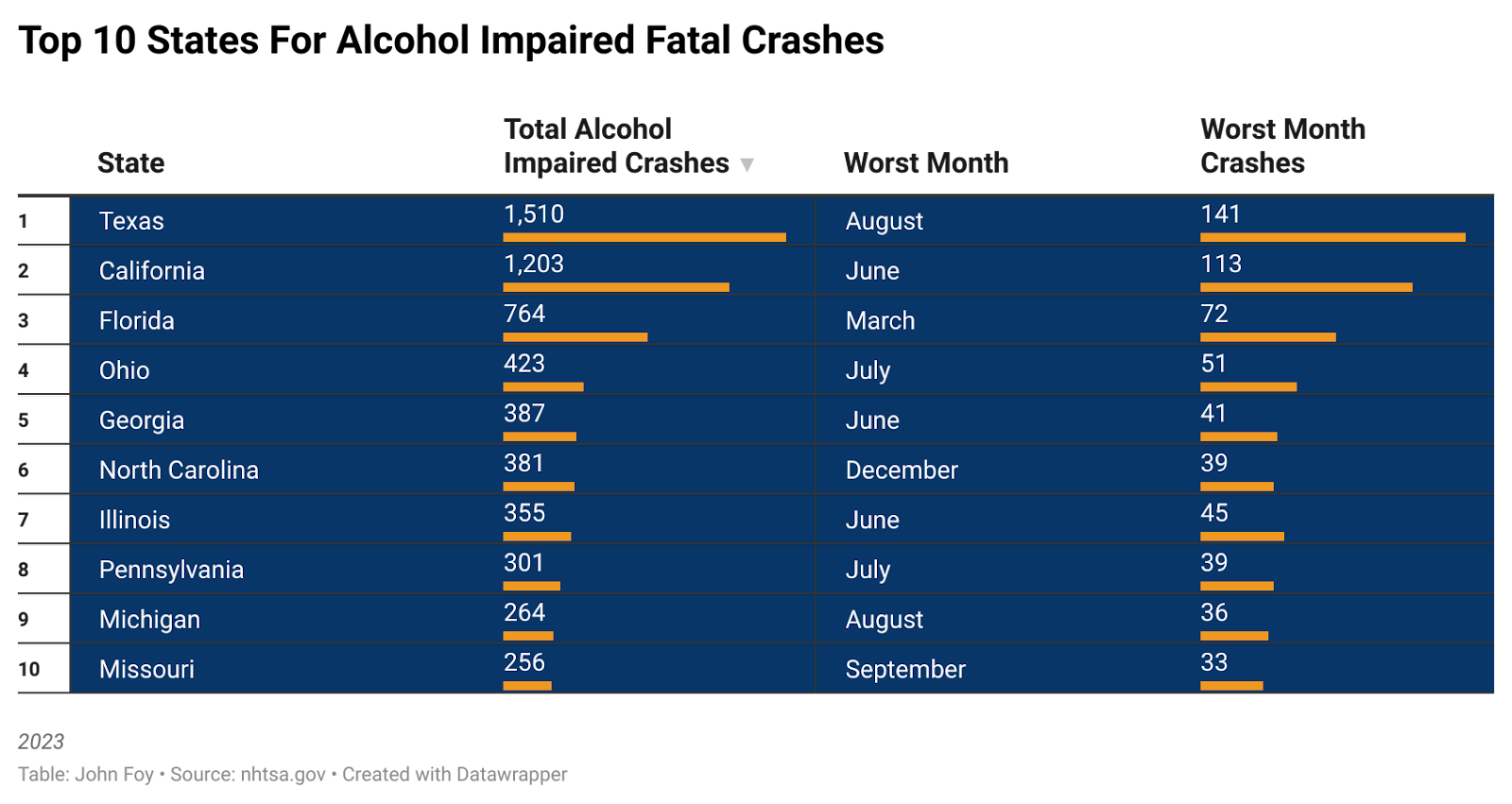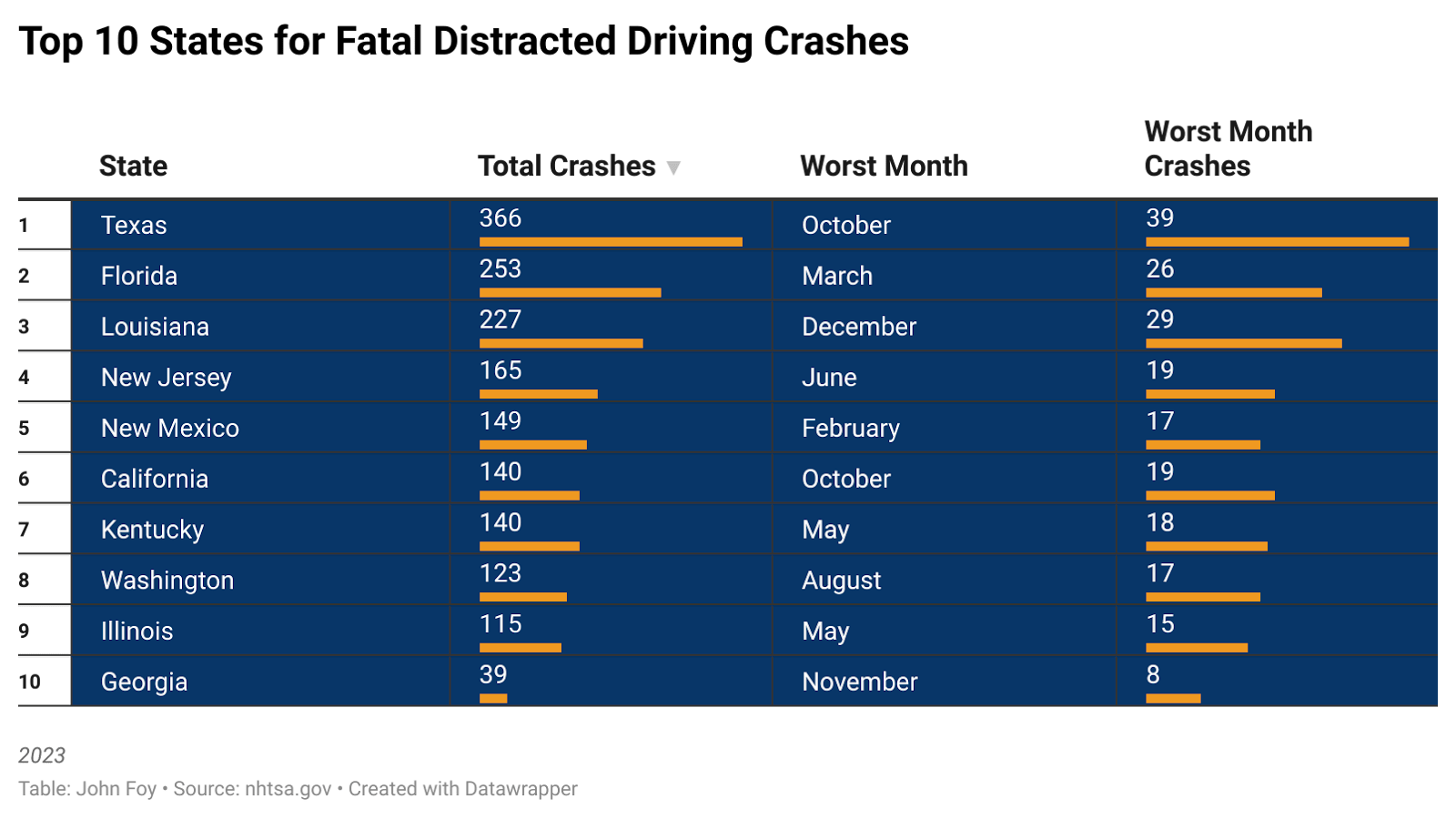October may not seem like a high-risk time to be on the road, with summer gone and fall settling in. But in 2023, it was the deadliest month for drivers across the United States.
This unexpected shift challenges long-held assumptions about summer being the most dangerous season for travel, and prompts a closer look at how fatal crashes fluctuate throughout the year.
John Foy & Associates conducted an in-depth review of national crash data to determine which times of year are most dangerous. Our analysis of statistics from the National Highway Traffic Safety Administration (NHTSA) reveals that October saw more fatal motor vehicle crashes than any other month, surpassing even historically hazardous summer months.
October, Overtaking Summer Months, is Now the Deadliest
According to the NHTSA, the U.S. experienced 37,654 fatal crashes in 2023, resulting in 40,901 deaths and over 2.6 million injuries. Among those, October accounted for 3,505 fatal crashes—nearly 12% above the monthly average of 3,138.
This shift emphasizes fall’s status as a high-risk season. While Summer (June through August) and Fall (September through November) both recorded just over 10,000 crashes, October alone pushed fall close to the top.
One contributing factor is the end of Daylight Saving Time. Research consistently shows that sudden changes in daylight hours can impair driver visibility and concentration, particularly during evening commutes. When paired with cooler weather, busy traffic, and holiday travel, October becomes a high-alert month for fatal crashes.
Notably, California reported 361 speeding-related deaths in October, the highest monthly toll recorded in any state.

Seasonal Patterns in Fatal Crashes
Crash risk fluctuates throughout the year, but 2023 data tells us that summer is (by just 15 fatalities) the busiest, most dangerous season. The crash numbers between June and August (10,017) are just slightly higher than fall’s (September to November) 10,002 fatalities, which are often due to the onset of slippery, dark conditions.
The third most dangerous period is spring (9,070 crashes between March and May), a time that features a spike in holiday travel. Winter (December to February) means fewer cars on the road; yet the icy, dark conditions still represent considerable danger (8,565 crashes).
February saw the fewest fatal crashes at 2,645, numbers that put it 20% below the monthly average. October, a month that marks the switch from dry, summer roads to wet, precarious ones, featured a fatality count far above the average monthly tally. Such swings markedly represent key changes in travel frequency, weather, and driver behavior.
Risky Driving Behaviors Behind the Numbers

According to NHTSA data, three key behaviors were involved in 66% of all fatal crashes in 2023: alcohol impairment, speeding, and distracted driving.
Alcohol-Impaired Crashes

The summer months consistently record high drunk driving-related fatalities (with July’s 1,065 alcohol-related crashes the year’s highest tally). This underscores the need for targeted enforcement around holidays and large events.
With 11,222 crashes across the year involving a driver with a BAC of 0.08 or higher, and drunk driving the key factor in 30% of all monthly crash fatalities, action to prevent alcohol-impaired driving is urgently required. And the same can be said regarding drivers who break the speed limit.
Speeding-Related Crashes

Driving too fast is always a year-round issue, but late spring and summer are especially dangerous. For instance, in 2023, speeding caused 10,541 fatal crashes, with peak fatality months July (1,014), May (973), and August (971), and the lowest numbers occurring in February (718).
And it’s not just drunk driving and speeding to blame for mass car accident fatalities – distracted driving is also a huge issue.
Distracted Driving Crashes

Distracted driving fatalities spiked during months featuring heavier travel volumes and school breaks, suggesting a correlation with road congestion and event-driven travel.
Across 2023, 3,041 crashes involved distracted driving, with peak fatality rates occurring in May (299), July (291), and August (285), and comparative lulls in January (192) and February (202).
Spring Break Surge in Fatalities
March showed a noticeable rise in fatal crashes across multiple states, particularly in areas with high spring break tourism. According to our analysis, Florida recorded 72 alcohol-related fatalities in March, one of its highest monthly totals of the year, while overall national crash totals in March were about 9% above winter averages.
The ‘spring break spike’ in fatalities highlights the risks tied to vacation travel, increased numbers of young drivers, and the prevalence of alcohol-fueled events. States like California and Texas also saw above-average fatalities in March.
Texas: A Dangerous Outlier
When we reviewed state-level crash data, Texas stood out as the most dangerous for motorists in 2023. The Lone Star State led the nation in both alcohol-impaired and speeding-related fatalities, as exemplified by its 1,510 alcohol-related deaths and 1,219 speeding-related deaths.
August was Texas’s deadliest month overall, with 141 alcohol-related crashes and 349 speeding fatalities.
This means nearly 25% of Texas’s total traffic deaths occurred in just one month. Factors like extreme heat, road rage, and end-of-summer travel may contribute to these spikes.
The scale of fatalities calls for intensive state-level awareness campaigns and seasonal law enforcement clampdowns. And while the heaviest cost is the sheer scale of lost human life, there are also serious financial consequences to consider.
The Financial Toll of Seasonal Crashes
The economic impact of traffic crashes in the U.S. exceeds $340 billion annually, according to figures from the U.S. Department of Transportation.
With 66% of fatal crashes caused by preventable behaviors like speeding, drunk driving, and distraction, many of these costs are avoidable. Such dangerous driving behaviors spike at predictable times: summer holidays, back-to-school travel, and during major events like Halloween or Spring Break.
By using this data to focus public safety efforts during known high-risk months, policymakers and communities can save lives. Beyond that, they can also reduce the overwhelming strain on emergency services, healthcare systems, and infrastructure.
Georgia’s Local Trends
Drivers in Georgia experienced fatal crash patterns that mirrored national trends. The state recorded 1,491 speeding-related fatalities, with the highest number occurring in June. Alcohol-related crashes also spiked during the summer and early fall, reinforcing seasonal patterns seen across the country.
As traffic volumes rise during holidays and school breaks, understanding peak risk times can help improve public safety. Our analysis confirms that while fatal crashes occur year-round, certain months, particularly October, consistently bring heightened danger.
For those impacted by serious collisions, speaking with an experienced Atlanta personal injury lawyer can be a critical step in understanding your rights and options for recovery.
By recognizing patterns in crash data, we hope to support prevention efforts and help reduce the toll these incidents take on communities across Georgia.
